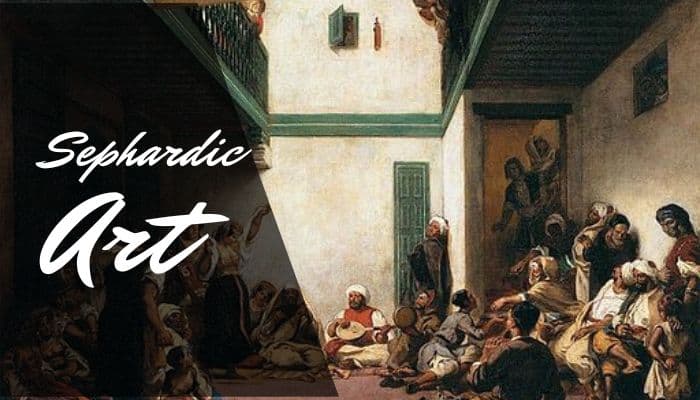A unique, elegant and rich reflection of daily and religious life.


Sephardic art flourished before 1492, manifesting itself in genres like poetry, painting, architecture, and music. This kind of art was practiced throughout the Iberian Peninsula, but it had to adapt to Sephardic society’s changes and constraints. Since the Spanish Inquisition and the deportation of Jews from Spain, we have been familiar with the idea of the Sephardic diaspora. Despite these changes, Sephardic art continued to have a significant influence despite becoming more difficult to find. Sometimes it would vanish, and other times it would journey across time and space with the Sephardic Jews.
Sephardic art was reimagined during more trying times for Jews around the world, starting in the 18th century and continuing till the present day. Sephardic art is seen as a richer, higher type of art. Some types of art, like as poetry and music, aid in identifying the challenges of the Sephardic Jews throughout history in a way that also illustrates the final tenacity of Jews as a whole. These two artistic mediums also highlight the significance of language and show how even that has changed over time, particularly in the case of the Ladino language.
Hebrew manuscript illuminations represent some of the finest examples of medieval Sephardic painting that are still readily available today. While Sephardic painters frequently drew influence from Christian painting traditions for the sake of visual narrative, many medieval Spanish Jews also frequently adopted painting styles from their Muslim and Christian neighbors, albeit for different reasons. For a large portion of the Middle Ages, Christians, Jews, and Muslims coexisted peacefully on the Iberian Peninsula, which contributes to the explanation of the popularity of this aesthetic fusion of several artistic traditions.
In order to see the Sephardic community’s effect both in the past and the present, an observer might interact with other visual arts such as painting and architecture. These representations of Jewish principles highlight gender differences, the challenges of the Jewish faith, and Jewish survival. The Sephardic community has been able to flourish despite hardship thanks to all of these artistic disciplines.
However, just because these three religious groups coexisted in close proximity for much of what is now Spain and Portugal during the Middle Ages does not imply that they were distributed equally throughout the Iberian Peninsula. In actuality, the locations in which the two types of borrowed illuminations were created played a significant role in their prevalence, as the regional distribution of Christians and Muslims varied. Jewish art was frequently representational in a Roman, Greek, or Christian setting, whereas decorative embellishment was typical in Islamic culture.
Visually interact and learn about our nearly 6000 year history.
An interactive tour through our rich heritage spanning from 900 B.C.E.
Learn about our numbers, languages and population.
The greatest minds, philosophers and authors of their time.
Everything you wanted to know about Sephardic customs.
Learn our traditions for brit to marriage and bereavement.
Food is the universal thing that has the power to bring people together.
Listen to the rich repertory of Sephardi music and prayers.
Connect to our calendar for the latest events and happenings.
Read real-time updates as the relates to the Sephardic world.
We welcome you to join us virtually for Shacharit and Arvit.
Make new friends while expanding your mind. Quarterly. Join now.
View the full list of every Jewish holiday and observance.
Browse through our recommended reading list of over 100 books.
Download our guides to help you plan for the Holidays.
We welcome all in need of prayer, healing or Kaddish.

Login to your account
Get notified about new articles